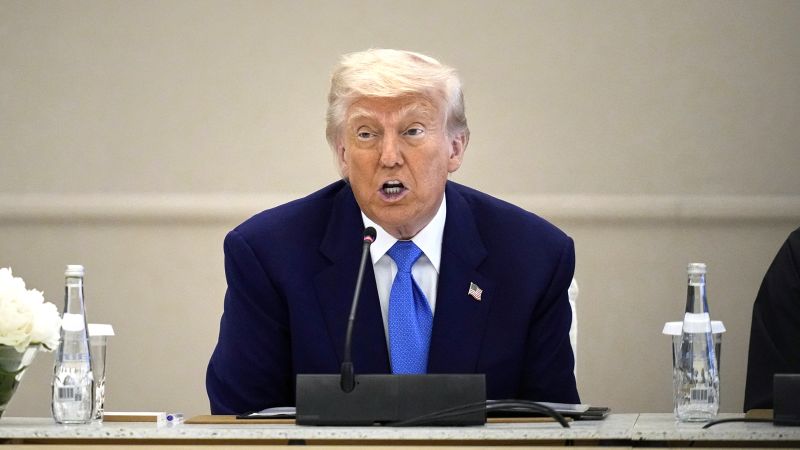The unfolding dynamics of President Donald Trump’s trade negotiations signal a potentially significant shift in the direction of U.S. tariffs, reviving the complexities of the trade war that many thought had cooled. Following a recent trip to the Middle East, Trump announced that tariff rates are set to rise once again. This sudden escalation has left various countries scrambling to negotiate favorable terms to avoid facing increased trade burdens when engaging in transactions with the United States.
During a business roundtable held in Abu Dhabi, Trump addressed the sluggish pace of trade negotiations, explaining that while approximately 150 countries were keen on securing trade deals, it was impractical for him and his administration to engage with every interested nation directly. To expedite the process, he indicated that Treasury Secretary Scott Bessent and Commerce Secretary Howard Lutnick would soon issue correspondence detailing newly established tariff rates for these countries. This decision seems to underscore a broader strategy by the Trump administration to limit prolonged negotiations and enforce terms unilaterally, should discussions not yield timely results.
Previously, in an initiative Trump dubbed “Liberation Day” on April 2, he suspended reciprocal tariffs that were set to take effect. The administration granted a 90-day reprieve to allow for negotiations to unfold between the U.S. and its trading partners. Despite this window, the American trade negotiators face considerable pressure to finalize agreements before tariffs potentially climb as high as 50 percent if no satisfactory arrangements can be reached. The implications of this are particularly severe for smaller nations with large trade deficits relative to the United States, which could find themselves facing disproportionately steep tariff rates.
Trump further elaborated on the peculiar nature of negotiating in an environment where demand far exceeds the capacity for engagement. He acknowledged the challenges posed by the numerous countries wishing to enter agreements, yet seemed firm on the notion that such negotiations were a series of deadlines that, if unmet, would be countered with tariffs—albeit he claimed fairness would be maintained throughout this process.
He alluded to past statements where he suggested that firm tariffs would be implemented for those who failed to negotiate satisfactorily within a defined timeframe. With this current round of discussions, Trump and his team appear keen to announce some new frameworks that would lead to either lower tariffs or reduced trade barriers. They recently struck deals with both the United Kingdom and China, a move that could signal the beginning of more aggressive trade reorientations as the administration continues to prioritize negotiated outcomes.
As the administration embarks on this path, there remains uncertainty regarding what the new tariffs will actually be and whether they will permanently replace the current suspended rates or serve as temporary measures until substantial agreements are reached. Currently, there exists a baseline 10 percent tariff on many imported goods, which some officials in the administration claim will only serve as a starting point for services from countries lagging in negotiations.
The potential for increased tariffs above the existing levels has raised alarms and led to speculation about the state of U.S. trade policy’s future trajectory. According to various economic analyses, even with some tariff pauses, the U.S. maintains an average tariff rate that is markedly higher than what was previously observed before Trump’s term, hinting at a shift toward a more protectionist trading stance.
Trump’s varying rhetoric on trade and tariffs contributes to ongoing volatility for businesses and consumers alike, creating a challenging environment fraught with uncertainties. Economists have suggested that the risk of a U.S. recession remains a distinct possibility, fluctuating in correlation with the administration’s trade policies.
While Trump’s advisers stress the progress being made in developing equitable trade agreements, the practicalities of such negotiations can be extraordinarily complex, often requiring time and compromises that are politically sensitive. His recent acknowledgment that achieving multiple deals in a short time frame might be untenable highlights the fallacy of relying solely on tariff threats to expedite trading decisions from international counterparts.
Ultimately, American consumers and businesses remain in a precarious position, facing the prospect of sustained price increases for imported goods due to the shifting landscape of U.S. trade policy. As negotiations continue, the global economic environment will likely feel the reverberations of the United States’ approach to tariffs and trade agreements in the months to come.



